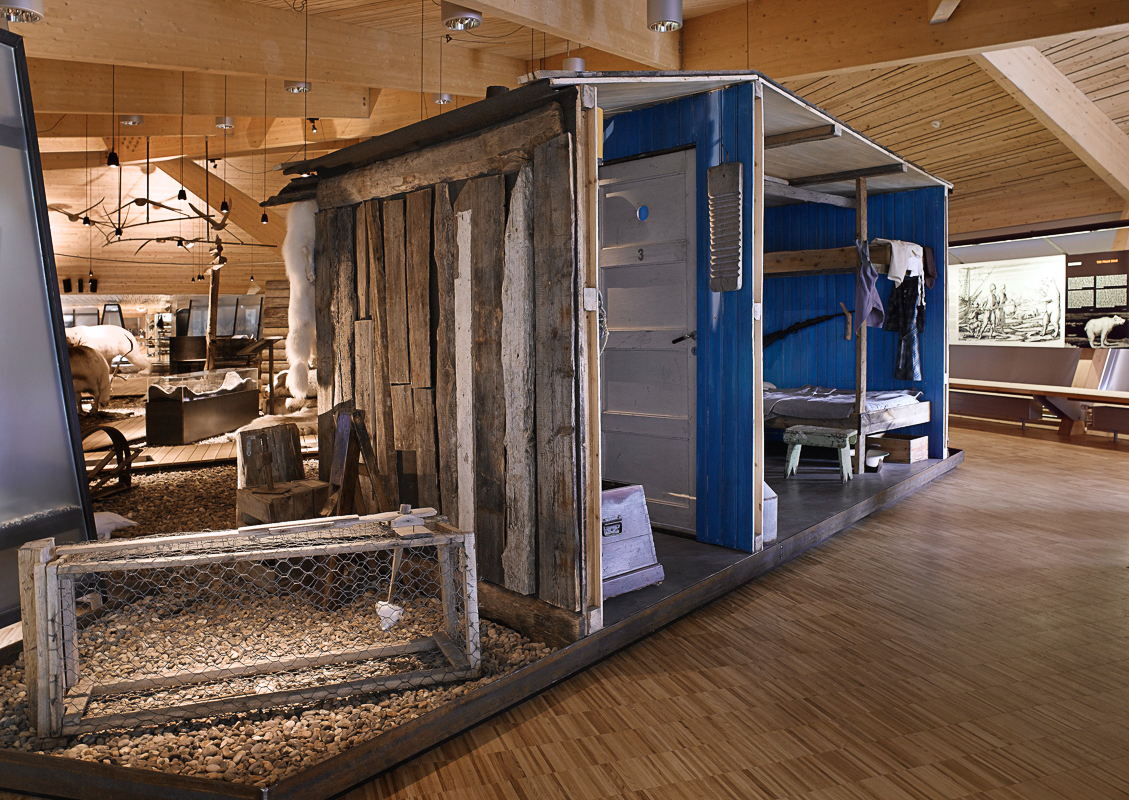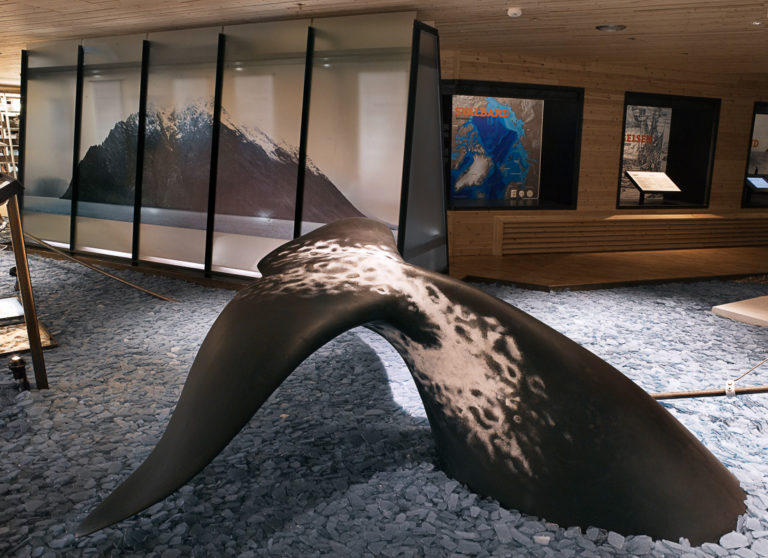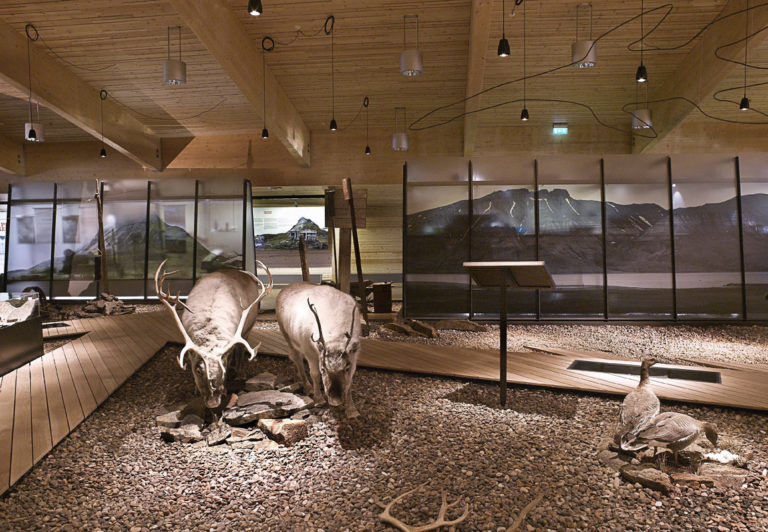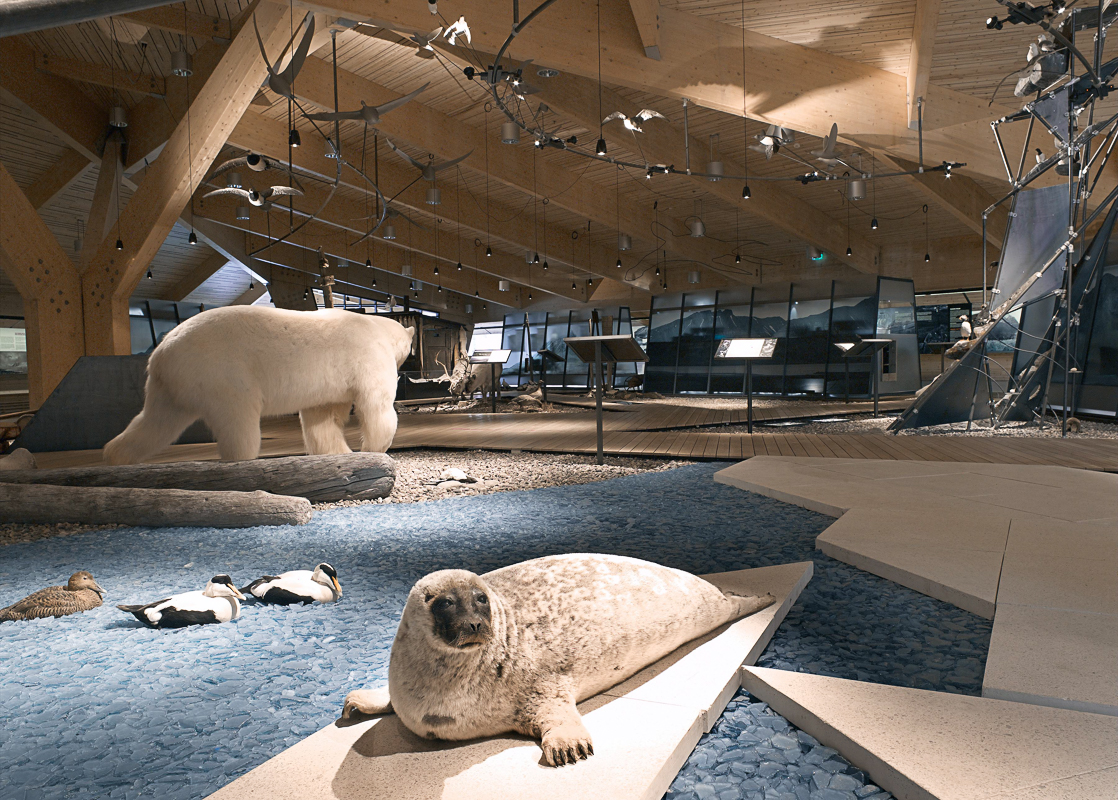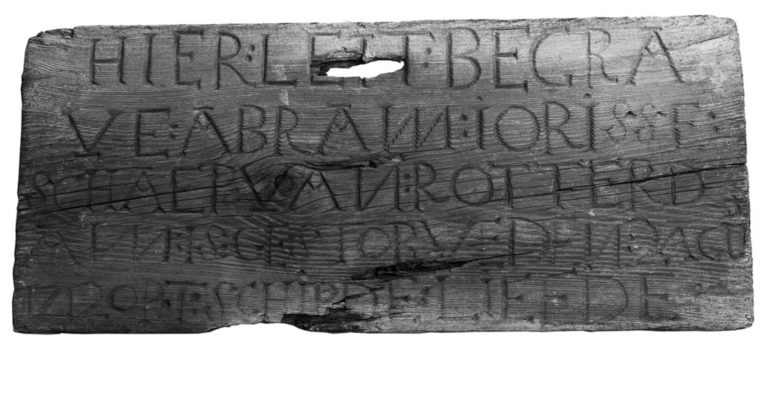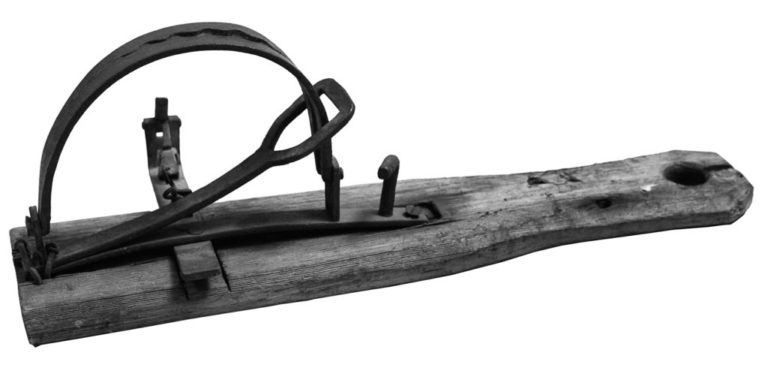Svalbard’s rich history and unique nature are the focus of the award-winning Svalbard Museum. Before you venture far and wide on Svalbard, this museum gives you an excellent insight, putting the wildlife, geology and people into context.
There are only a few species that can survive on land in the High Arctic, such as the Svalbard grouse and the compact Svalbard reindeer. The sea, on the other hand, is rich in wildlife, as the confluence of warm and cold ocean currents means the waters are teeming with nutrients. Ringed seals, common seals, walrus and many different types of whale feed on the plentiful supplies of fish and plankton, while around 3000 polar bears hunt the seals. The vegetation is only a few centimetres high, but includes the Svalbard poppy, several types of saxifrage and Polar willow. Scurvy grass grows in the droppings beneath the bird cliffs.
Rocks and fossils
The sparse vegetation means that it’s easy to pick out the different types of rock on Svalbard. The archipelago used to be much closer to the equator, which explains the large coal deposits from the Carboniferous period and the many fossils from the Jurassic period. The whole of Svalbard is a rich picking ground for fossils of plesiosaurs, pterosaurs, armoured prehistoric fish and other marine fossils from many different eras.
Discovery of Svalbard
At the end of the 16th century, the western European countries organised expeditions to find a quicker sea route to Asia. In 1596, a Dutch expedition led by Willem Barentsz came north in an attempt to sail north around Asia to China. The first thing they did was kill a polar bear beside an island, which they then named Bjørnøya, or Bear Island. They then sailed along a coastline of sharp peaks, or Spitsbergen in Dutch, observing the many whales and walruses. At Novaya Zemlya, further east, they became icebound and had to stay over winter, eventually managing to make their way to north-west Russia where they found people again. The expedition was a fiasco, but Svalbard and its rich natural resources were now on the map.
Whaling era
The first whale was killed in 1612, and that was the starting signal for a whaling rush on Svalbard. The bowhead whale was hunted with harpoons from small boats in the fjords along the west coast of Svalbard. The fat was then cut up and boiled in large onshore vats, a process involving several hundred men. In about 1650, however, the whales were hunted out of the region, and larger ships were now needed to hunt them further up towards the edge of the ice. Svalbard became a much quieter place, and by the end of the 18th century, the whales were almost extinct.
The Russian period
In 1704, the Russians started setting up overwintering stations on Svalbard to use as bases from which to hunt and trap walruses and fur animals such as foxes, seals and polar bears. It was part of a co-ordinated Russian investment in the Nordic regions. The trappers’ stations were built from logs brought in from the White Sea, and were fairly large buildings with several rooms. Large Orthodox crosses served both as protection and as navigational markers. This Russian activity calmed down towards 1800, and stopped altogether after 1840.
Overwintering hunters
From the first half of the 20th century, trappers, mostly from Northern Norway, overwintered on Svalbard in simple trappers’ cabins. They hunted fur animals such as Arctic foxes, polar bears and seals, gathered down from the Eider ducks, and shot birds and reindeer for fresh meat. Altogether, more than 1000 people overwintered during this period, mostly before 1940. The trappers were probably attracted less by a thirst for adventure than by the money they could earn here.
Mining
Svalbard’s coal deposits were discovered just before 1900, and people from many countries eagerly staked their claims. Places like Svea, Pyramiden, Grumantbyen, Barentsburg and Longyearbyen were a hive of activity. The Norwegians and Russians (Soviets) have mined here for the longest continuous periods, but there were also times when the Swedes, Americans and Dutch were heavily involved. The mining communities worked all year round — and from November to June, they and their hundreds of workers were cut off from the mainland.
